
Think of Lombok as Bali's quieter, less crowded counterpart, with terrific beaches, world-class diving and snorkeling, beautiful scenery, and an interesting local culture. If you're seeking a place to rest and recharge, you can't do better than Lombok.
Geography and People
A fishing boat puts out to sea from Lombok (flickr user yeowatzup)
Just a few miles to the east of Bali and slightly bigger, Lombok is roughly circular, with a population of nearly 3 million people.
The island's topography is dominated by the centrally-located Gunung Rinjani (Mount Rinjani), a volcano which rises to 12,224 feet, making it the third-highest volcanic mountain in Indonesia. The most recent eruption of Rinjani was in the summer of 1994. The volcano and its sacred crater lake, Lake Segara Anak, are protected by a national park established in 1997. The southern part of the island is a fertile plain where corn, rice, coffee, tobacco, and cotton are grown.
Interestingly, the Lombok Strait-the passage between Bali and Lombok-separates the fauna of the Indonesian and Malaysian ecosystem from the very different fauna of Australasia. This division is known as the Wallace Line, named for Alfred Russel Wallace, the 19th century naturalist who first remarked on the distinction. Scientists theorize that the Lombok Strait was too broad and deep for animals coming from Java and Bali to swim across, enabling the evolution of different species of animals on Lombok and islands to the east.
Lombok's people are 85% Sasak, culturally and linguistically closely related to the Balinese, but unlike Bali's largely Hindu population, they are Muslims. A notable non-orthodox Islamic group found only on Lombok are the Wektu Telu ("Three Prayers"), who, as the name suggests, pray only three times daily, instead of the five times required in the Quran. About 10-15% of the population is Balinese, with the small remainder being Chinese, Arab, Javanese, and Sumbawanese.
The more Islamic culture on Lombok compared to Bali may explain why Lombok is quieter than Bali in terms of parties and nightlife, which can be either a positive or a negative depending on your point of view. Lombok is also becoming increasingly popular for honeymooners.
Things to See and Do on Lombok
The most-developed center for tourist services, although not necessarily the most beautiful spot, is
Senggigi, spread along an eight mile strip along the coastal road north of the main city of Mataram. Backpackers and those seeking serious peace and quiet congregate in the Gili Islands off the west coast.
Sightseeing highlights include:
Kuta (no connection to Bali's overdeveloped Kuta beach). The surfing here is considered some of the best in the world. Kuta, on Lombok's south coast, is also famous for its beautiful, untouched beaches.
Tanjung Aan, a beautiful bay near Kuta beach, noted for its unusual, pepper-like sand. But be prepared for lots of hawkers (mainly children) selling souvenirs.
The curious sand of Tanjung Aan
Taman Narmada. Located about eight miles east of Mataram, this park has a Hindu temple and a small pond replicating in miniature the crater lake at Gunung Riniani. The Balinese Pujawali festival takes place here every year. If you haven't located the fountain of youth elsewhere, visitors can drink from the one here to secure long life.
Pura Lingsar. Built in 1714, Pura Lingsar is a spiritual center for both Balinese Hinduism and the Wektu Telu religion, with temple buildings dedicated to both faiths. You can feed eggs (available for sale outside) to holy eels in an enclosed pond dedicated to Lord Vishnu. The best time to visit the temple is December, where Hindu and Wektu Telu believers parade in traditional costumes and throw ketupat (sticky rice in coconut leaves) at each other.
Shopping. High quality handicrafts and textiles are produced all over the island. Sukarare village is a good place to see these items being made, and the prices should be cheaper than in Senggigi shops.
Snorkeling and diving.. The clear, warm waters off Lombok's coast offer limitless snorkeling and diving adventures. The Gili Islands, discussed below, offer particularly good options.
Massage. You'll probably be offered massages right on the beach, but if you want to ensure a quality experience, ask your hotel to recommend a masseuse.
The Gili Islands
The three delightful Gili Islands, just a few miles off the west coast of Lombok, are a small-scale backpacker mecca and Lombok's most popular tourist destination. The islands are very relaxed and laid-back, with countless little beachside cafes playing reggae and serving up banana pancakes, and no cars or motorbikes to disturb the peace. The beaches are without a doubt better than anywhere on Bali or Lombok, although there's not much to do except enjoy the beaches and the water.
From west to east, the islands are:
Gili Trawangan, or "Gili T," is by far the most developed with plenty of backpacker options and one swanky resort. Gili Trawangan is known as more of a party island and activities tend to revolve around the bar scene. There are no dogs on the island but according to one local, there are more cats than people. The local population is around 800.
Gili Meno, the smallest and quietest of the islands, low-key with some simple places to stay.
Gili Air, closest to the mainland and with the largest local population.
The crystalline waters of the Gili Islands
Strictly speaking, the name "Gili Islands" is rather redundant as gili simply means "small island" in Sasak, but the name has stuck and is universally used and understood in Lombok.
In a rare display of foresight, all forms of motorized transport are banned from the islands; your only choice of transportation is horse-drawn carts, known as cidomo, which are used to shuttle around people, diving gear and other supplies. However, as the islands are only a few miles in diameter, it's entirely possible just to walk instead.
Numerous boats leave from mainland Lombok and Bali to the islands daily (but only during daylight hours). Traveling between the islands requires either catching the infrequent shuttle boats or chartering one to take you across. The distances between the islands may seem swimmable, but do not attempt it - the currents can be fierce and several backpackers have died trying.
Things to See and Do on the Gili Islands
There are no sights as such on the islands themselves, but the snorkeling and diving are a major draw. You can rent masks and fins off the beach, or contact any of the numerous dive shops to arrange snorkeling or diving at choice spots nearby. Sea turtles are a common sight, especially around Turtle Point just north of Gili Meno.
It's also nice to walk around the islands. The perimeters of the islands are conducive to a two or three hour leisurely walk with no strenuous hills. Just follow the coastline and put on your sunscreen for a nice morning stroll.
Gili Meno has a "bird sanctuary," which is more like a bird zoo since the birds are caged. Access to the site is a short walk inland from the main strip on the west of the island.
The Gili Islands are also a great place to do nothing at all. Leave your watch in your bungalow, find a little beachside restaurant and enjoy a cool drink while you read or simply soak up the tranquility.
Sip your drink for as long as you want in little cafes like this one, right on the beach. No extra charge for the view.
Eating and Drinking on Lombok
Despite the fact that the very word lombok means "chili pepper," the local cuisine isn't quite as spicy as you might expect. Probably the best known local dish is ayam taliwang, chicken stewed in a rich sauce of galangal, turmeric and (of course) chili. One very reliable meal choice is nasi campur, which is rice with any variety of side dish. There are also restaurants where the food is presented on a pyramid of plates within a window, with the price depending on which plate you choose.
Alcoholic drinks are not available everywhere throughout the island, as Lombok is mostly Muslim. However, local supermarkets offer a variety of local as well as international beers. The island's most touristic city, Senggigi, has numerous bars and clubs with the usual international favorites. The local favorite, though, is tuak, a red or white fermented palm wine.
Geography and People
A fishing boat puts out to sea from Lombok (flickr user yeowatzup)
Just a few miles to the east of Bali and slightly bigger, Lombok is roughly circular, with a population of nearly 3 million people.
The island's topography is dominated by the centrally-located Gunung Rinjani (Mount Rinjani), a volcano which rises to 12,224 feet, making it the third-highest volcanic mountain in Indonesia. The most recent eruption of Rinjani was in the summer of 1994. The volcano and its sacred crater lake, Lake Segara Anak, are protected by a national park established in 1997. The southern part of the island is a fertile plain where corn, rice, coffee, tobacco, and cotton are grown.
Interestingly, the Lombok Strait-the passage between Bali and Lombok-separates the fauna of the Indonesian and Malaysian ecosystem from the very different fauna of Australasia. This division is known as the Wallace Line, named for Alfred Russel Wallace, the 19th century naturalist who first remarked on the distinction. Scientists theorize that the Lombok Strait was too broad and deep for animals coming from Java and Bali to swim across, enabling the evolution of different species of animals on Lombok and islands to the east.
Lombok's people are 85% Sasak, culturally and linguistically closely related to the Balinese, but unlike Bali's largely Hindu population, they are Muslims. A notable non-orthodox Islamic group found only on Lombok are the Wektu Telu ("Three Prayers"), who, as the name suggests, pray only three times daily, instead of the five times required in the Quran. About 10-15% of the population is Balinese, with the small remainder being Chinese, Arab, Javanese, and Sumbawanese.
The more Islamic culture on Lombok compared to Bali may explain why Lombok is quieter than Bali in terms of parties and nightlife, which can be either a positive or a negative depending on your point of view. Lombok is also becoming increasingly popular for honeymooners.
Things to See and Do on Lombok
The most-developed center for tourist services, although not necessarily the most beautiful spot, is
Senggigi, spread along an eight mile strip along the coastal road north of the main city of Mataram. Backpackers and those seeking serious peace and quiet congregate in the Gili Islands off the west coast.
Sightseeing highlights include:
Kuta (no connection to Bali's overdeveloped Kuta beach). The surfing here is considered some of the best in the world. Kuta, on Lombok's south coast, is also famous for its beautiful, untouched beaches.
Tanjung Aan, a beautiful bay near Kuta beach, noted for its unusual, pepper-like sand. But be prepared for lots of hawkers (mainly children) selling souvenirs.
The curious sand of Tanjung Aan
Taman Narmada. Located about eight miles east of Mataram, this park has a Hindu temple and a small pond replicating in miniature the crater lake at Gunung Riniani. The Balinese Pujawali festival takes place here every year. If you haven't located the fountain of youth elsewhere, visitors can drink from the one here to secure long life.
Pura Lingsar. Built in 1714, Pura Lingsar is a spiritual center for both Balinese Hinduism and the Wektu Telu religion, with temple buildings dedicated to both faiths. You can feed eggs (available for sale outside) to holy eels in an enclosed pond dedicated to Lord Vishnu. The best time to visit the temple is December, where Hindu and Wektu Telu believers parade in traditional costumes and throw ketupat (sticky rice in coconut leaves) at each other.
Shopping. High quality handicrafts and textiles are produced all over the island. Sukarare village is a good place to see these items being made, and the prices should be cheaper than in Senggigi shops.
Snorkeling and diving.. The clear, warm waters off Lombok's coast offer limitless snorkeling and diving adventures. The Gili Islands, discussed below, offer particularly good options.
Massage. You'll probably be offered massages right on the beach, but if you want to ensure a quality experience, ask your hotel to recommend a masseuse.
The Gili Islands
The three delightful Gili Islands, just a few miles off the west coast of Lombok, are a small-scale backpacker mecca and Lombok's most popular tourist destination. The islands are very relaxed and laid-back, with countless little beachside cafes playing reggae and serving up banana pancakes, and no cars or motorbikes to disturb the peace. The beaches are without a doubt better than anywhere on Bali or Lombok, although there's not much to do except enjoy the beaches and the water.
From west to east, the islands are:
Gili Trawangan, or "Gili T," is by far the most developed with plenty of backpacker options and one swanky resort. Gili Trawangan is known as more of a party island and activities tend to revolve around the bar scene. There are no dogs on the island but according to one local, there are more cats than people. The local population is around 800.
Gili Meno, the smallest and quietest of the islands, low-key with some simple places to stay.
Gili Air, closest to the mainland and with the largest local population.
The crystalline waters of the Gili Islands
Strictly speaking, the name "Gili Islands" is rather redundant as gili simply means "small island" in Sasak, but the name has stuck and is universally used and understood in Lombok.
In a rare display of foresight, all forms of motorized transport are banned from the islands; your only choice of transportation is horse-drawn carts, known as cidomo, which are used to shuttle around people, diving gear and other supplies. However, as the islands are only a few miles in diameter, it's entirely possible just to walk instead.
Numerous boats leave from mainland Lombok and Bali to the islands daily (but only during daylight hours). Traveling between the islands requires either catching the infrequent shuttle boats or chartering one to take you across. The distances between the islands may seem swimmable, but do not attempt it - the currents can be fierce and several backpackers have died trying.
Things to See and Do on the Gili Islands
There are no sights as such on the islands themselves, but the snorkeling and diving are a major draw. You can rent masks and fins off the beach, or contact any of the numerous dive shops to arrange snorkeling or diving at choice spots nearby. Sea turtles are a common sight, especially around Turtle Point just north of Gili Meno.
It's also nice to walk around the islands. The perimeters of the islands are conducive to a two or three hour leisurely walk with no strenuous hills. Just follow the coastline and put on your sunscreen for a nice morning stroll.
Gili Meno has a "bird sanctuary," which is more like a bird zoo since the birds are caged. Access to the site is a short walk inland from the main strip on the west of the island.
The Gili Islands are also a great place to do nothing at all. Leave your watch in your bungalow, find a little beachside restaurant and enjoy a cool drink while you read or simply soak up the tranquility.
Sip your drink for as long as you want in little cafes like this one, right on the beach. No extra charge for the view.
Eating and Drinking on Lombok
Despite the fact that the very word lombok means "chili pepper," the local cuisine isn't quite as spicy as you might expect. Probably the best known local dish is ayam taliwang, chicken stewed in a rich sauce of galangal, turmeric and (of course) chili. One very reliable meal choice is nasi campur, which is rice with any variety of side dish. There are also restaurants where the food is presented on a pyramid of plates within a window, with the price depending on which plate you choose.
Alcoholic drinks are not available everywhere throughout the island, as Lombok is mostly Muslim. However, local supermarkets offer a variety of local as well as international beers. The island's most touristic city, Senggigi, has numerous bars and clubs with the usual international favorites. The local favorite, though, is tuak, a red or white fermented palm wine.
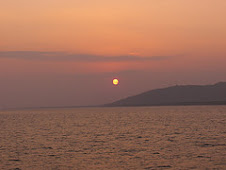
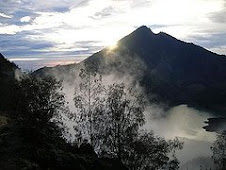
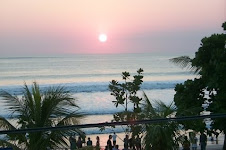
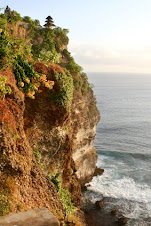
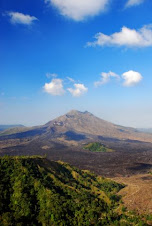
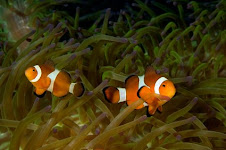

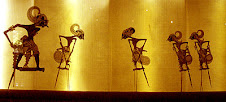



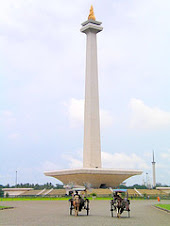
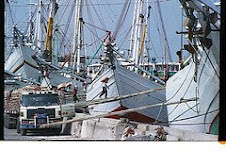
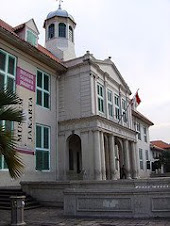
.jpg)

No comments:
Post a Comment